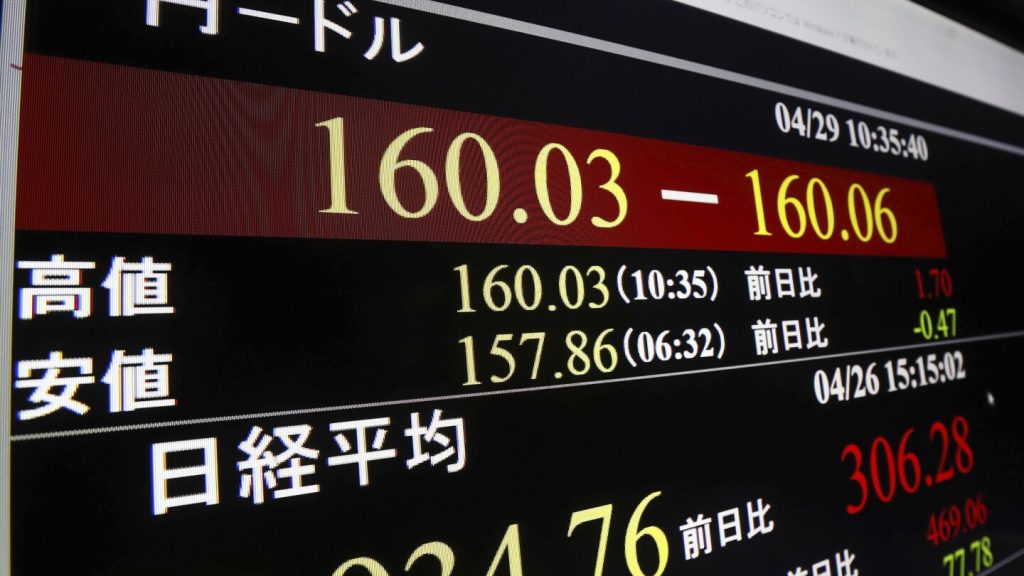The Japanese yen has seen significant volatility in the financial markets, reaching a value of 160 yen to equal $1, a level not seen since 1990. This weakening of the yen has raised speculation about actions being taken by Japanese officials to support their currency. The Bank of Japan’s decision to keep interest rates low, with a recent policy change, has contributed to the yen’s weakness. The lack of commitment from the Bank of Japan for more rate hikes may continue to keep the yen under pressure in the third quarter of this year.
The strength of the U.S. economy has also played a role in the yen’s weakness, with expectations for the Federal Reserve to maintain higher interest rates. This has resulted in high U.S. Treasury yields and upward pressure on the U.S. dollar’s value. While a weak yen can benefit U.S. tourists traveling to Japan and boost the sales of Japanese exporters when translated back into yen, it also poses risks such as potential inflation overshooting targets and negatively impacting the Japanese economy. Japan’s heavy reliance on imports, particularly energy traded in U.S. dollars, further amplifies these risks.
The Bank of Japan’s recent decision to hold interest rates steady has further exacerbated the weakness of the yen. The market reaction to this lack of commitment for future rate hikes suggests that the yen may remain under pressure in the coming months. The close relationship between the U.S. economy’s strength and the weakening of the yen highlights the interconnectedness of global financial markets and the impact of major economic decisions on currency values.
With the U.S. economy showing resilience and inflation remaining higher than expected, the Federal Reserve is likely to maintain its main interest rate at a high level for an extended period. This continued strong economic performance in the U.S. has led to expectations of ongoing pressure on the yen, as well as upward trends in U.S. Treasury yields. The implications of these trends extend beyond currency values, impacting various sectors of the global economy and underscoring the importance of monitoring international financial developments.
The rapid shifts in the yen’s value, such as the brief spike to 160 yen to $1, demonstrate the volatility and unpredictability of the foreign exchange market. The influence of factors like central bank policies, economic indicators, and market sentiment can lead to significant fluctuations in currency values. As investors and traders navigate these market dynamics, the consequences of currency movements on trade, investment, and economic stability are closely monitored. The recent events surrounding the yen serve as a reminder of the intricate interplay between global economic forces and the ever-changing landscape of financial markets.


